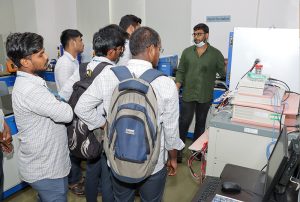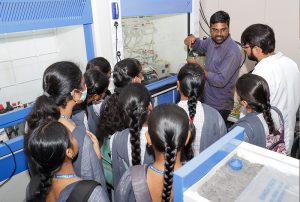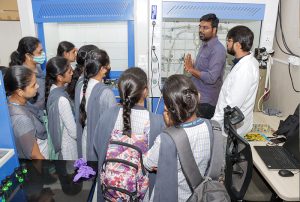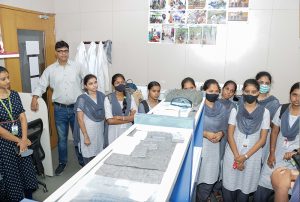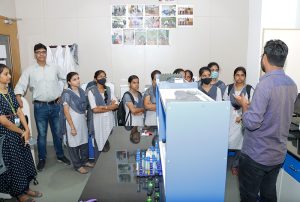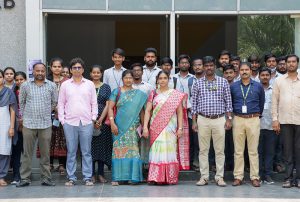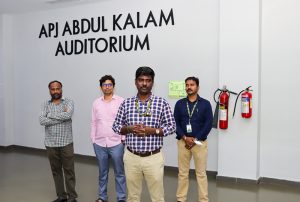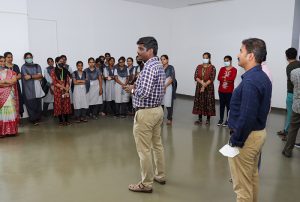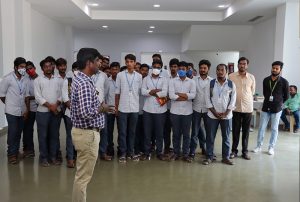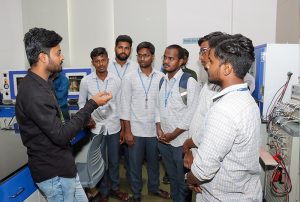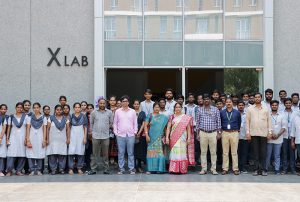Know your style of writing
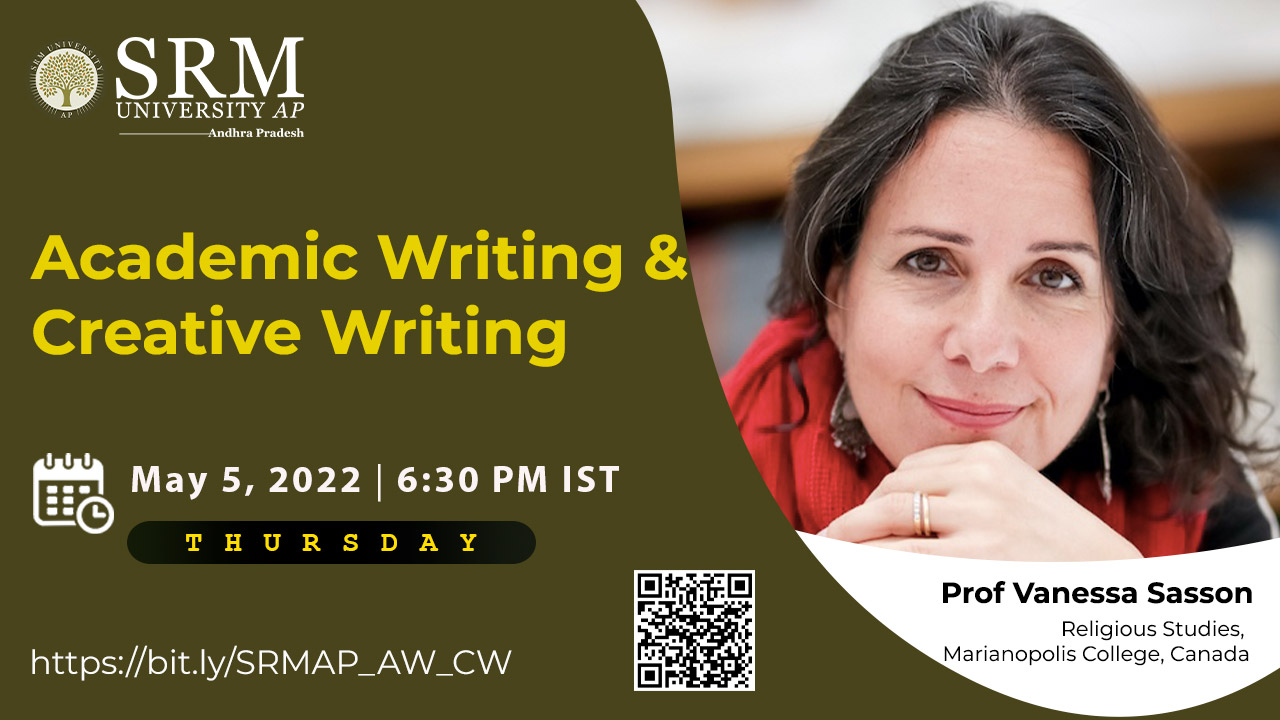
The art of writing can be branched out into different types depending upon the purpose of each piece of writing. You might have come across varied styles of writing such as creative writing, academic writing, technical writing and many more. Have you ever tried to deduce the difference between all these writing styles? Well, we offer you an informative session that will help you gather a better understanding of different styles of writing.
The Department of English has scheduled a webinar on the topic “Academic Writing & Creative Writing” under the theme “Language and Society” with Prof Vanessa Sasson as the keynote speaker.
Date: May 05, 2022
Time: 6.30 PM IST
Academic writing and creative writing seem to be pulling the act of writing and the writers in two different directions. A lot of writers, especially aspiring writers, tend to think of both genres as catering to very different audiences and fulfilling very different needs in very different contexts. Does that mean you can be only one and not the other? Do you have to choose? And how do you decide what to commit to? In this talk, Prof Vanessa Sasson will share her experience of writing in both capacities and discuss the joys and challenges of both.
About the Speaker
Vanessa R Sasson is a professor of Religious Studies in the Liberal Arts Department of Marianopolis College where she has been teaching since 1999. She is also a Research Fellow at the University of the Free State and a Research Member for CERIAS at UQAM. She has published widely as a scholar, with a number of academic books to her credit. Her most recent book was published by the University of Hawaii Press (2021) and is entitled, Jewels, Jewelry, and Other Shiny Things in the Buddhist Imaginary. Yasodhara and the Buddha (Bloomsbury, 2021) is her first novel. She is currently completing the sequel.
Join the Webinar to master the art of writing!
- Published in Departmental Events, English, English Current Happenings, Events
Engineering and research challenges in building smart cameras
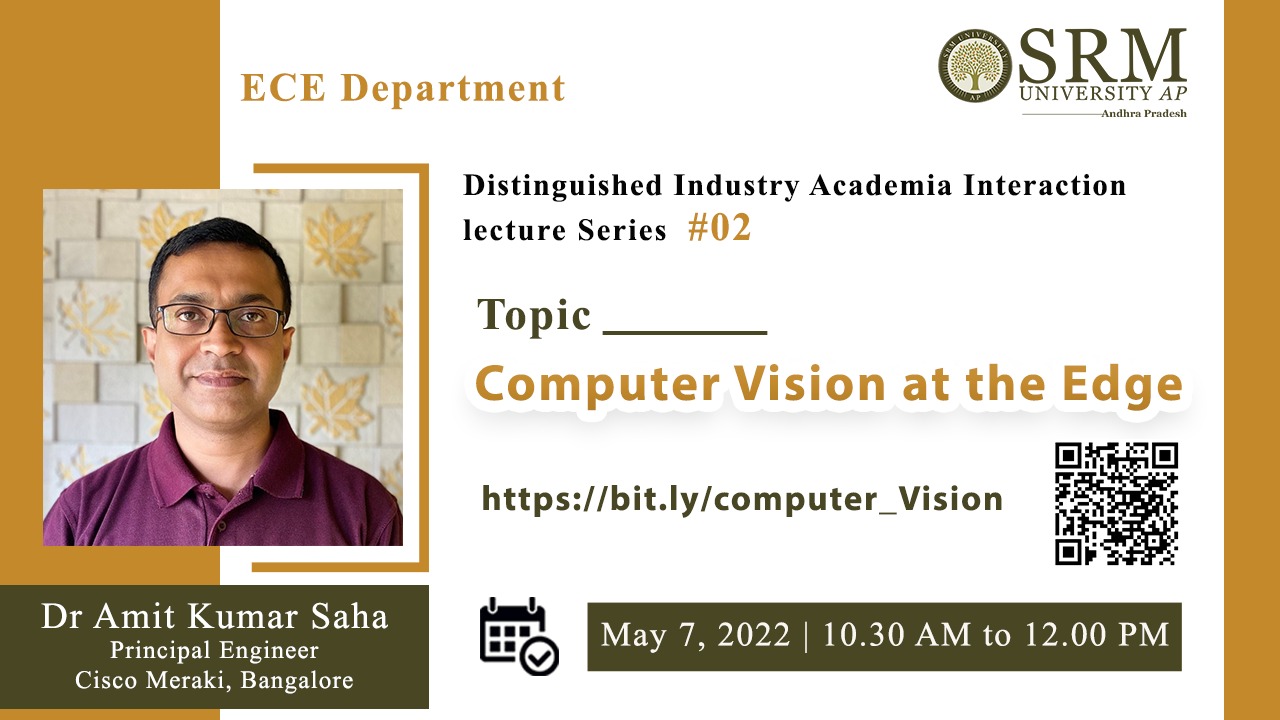 Machine Learning has started its move from the cloud to the periphery of the network. Today’s edge devices are becoming smarter and are no longer the dumb devices that would simply transmit the data to some central location. The Department of Electronics and Communication Engineering is conducting the 2nd department distinguished Industry-Academia Interaction lecture in the ECE DDIAIL series. Dr Amit Kumar Saha, Principal Engineer at Cisco Meraki, Bangalore, will deliver a talk on the topic ‘Computer vision at the edge’.
Machine Learning has started its move from the cloud to the periphery of the network. Today’s edge devices are becoming smarter and are no longer the dumb devices that would simply transmit the data to some central location. The Department of Electronics and Communication Engineering is conducting the 2nd department distinguished Industry-Academia Interaction lecture in the ECE DDIAIL series. Dr Amit Kumar Saha, Principal Engineer at Cisco Meraki, Bangalore, will deliver a talk on the topic ‘Computer vision at the edge’.
The talk will focus on the evolution of a specific type of edge device, the surveillance camera, from the traditional CCTV model to the smart camera model. It will discuss some of the engineering and research challenges in building smart cameras that lie at the periphery of the network.
Date: May 7, 2022
Time: 10.30 am to 12.00 pm IST
About the speaker
Dr Amit Kumar Saha is the Principal Engineer at Cisco Meraki, Bangalore. He received his PhD degree from Rice University in 2007. Prior to that, he obtained his BTech degree from IIT Kharagpur as a recipient of Dr B C Roy Gold Medal in 1999 for being the single graduating student with the best mix of academics and extracurricular activities. Dr Amit explores the next generation of technology at the intersection of networks, distributed systems, and data science, with a special emphasis on system-wide design. He is part of Cisco Meraki’s Camera Intelligence team and enables Cisco’s internal products as well as customers better manage their AI/ML life cycles by making it easier to train and tune models and deploy distributed machine learning workloads. He passionately seeks out opportunities to give back to the community through talks, research collaborations, organising conferences, and as visiting faculty at several top institutes in India.
Join the webinar and learn from industry professionals
- Published in Departmental Events, ECE Events, Events, Webinars
Inspiring the world with quality research facilities
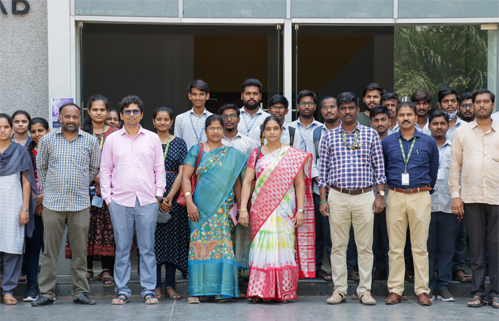 SRM AP is known for its resources and facilities for pioneering research with the support of global leaders and SME’s while sticking to compliance and international regulations. Obtaining research excellence in every field of study has been a mission of the university. Recently, 50 MSc students from the Department of Chemistry, KBN College, Vijayawada, visited our university to explore the analytical and research facilities available here.
SRM AP is known for its resources and facilities for pioneering research with the support of global leaders and SME’s while sticking to compliance and international regulations. Obtaining research excellence in every field of study has been a mission of the university. Recently, 50 MSc students from the Department of Chemistry, KBN College, Vijayawada, visited our university to explore the analytical and research facilities available here.
The research areas handled by the Department of Chemistry of SRM AP include the disciplines of chemical sciences, ranging from organic, inorganic, and physical, to theoretical or computational chemistry. The department’s highly disciplinary and collaborative environment is indeed inspiring, and it continues to grab attention. The strong interactions of the university with other premier institutions across India and around the world refine the quality of analytical and research facilities available here. The students from KBN college eagerly interacted with the faculty members and research scholars. Dr Mahesh Kumar Ravva and Dr Rajapandiyan, Faculty members, coordinated the visit.
- Published in Chemistry Events, Chemistry-news, News
Scope for sponsored projects and its implementation
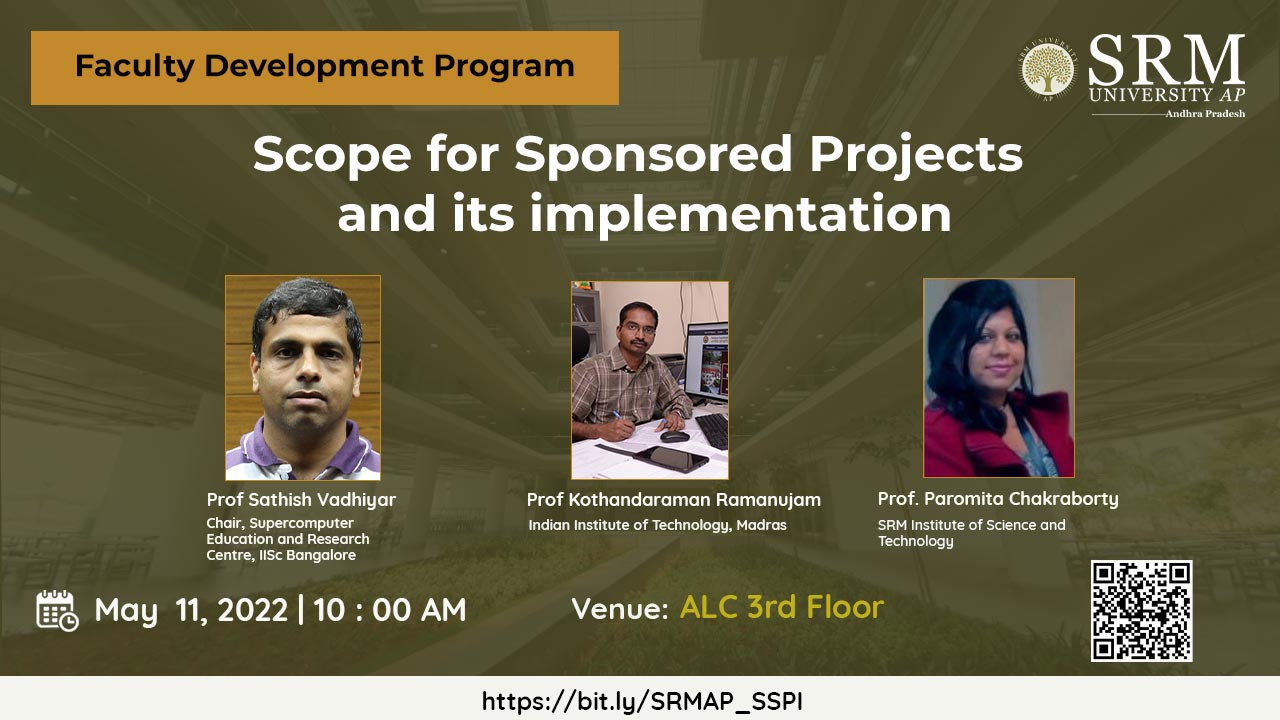
The Department of Physics is organising a Faculty Development Program on ‘Scope for Sponsored Projects and its Implementation’ with eminent academicians, Prof Sathish Vadhiyar, Chair, Supercomputer Education and Research Centre, IISc Bangalore and Prof Kothandaraman Ramanujam, Indian Institute of Technology, Madras.
Date: May 11, 2022
Time: 10.00 am
Venue: ALC 3rd Floor
Discussing the scopes and challenges of such sponsored projects is inevitable as it determines the progress in its execution. Documenting a list of the project goals, deliverables, tasks, costs and deadlines is, therefore, an important part of this process. This will help in establishing the objectives of the project, analysing its limits, and providing a roadmap to move ahead.
Prof Sathish Vadhiyar will deliver a talk on the National Supercomputing Mission (NSM) Program which was introduced by the government of India with an aim to connect national academic and R&D institutions with a grid of high-performance computing facilities. This is an effort to improve the number of supercomputers owned by India. Prof Kothandaraman Ramanujam will provide a brief awareness regarding consultancy projects set up with the industry through his talk. The session will be wrapped up by Prof Paromita Chakraborty who will give an overview of funded projects and bilateral projects.
Join here for an informative session.
- Published in Departmental Events, Events, Physics
Faculty Development Programme on Optical Communication and Wireless Networks
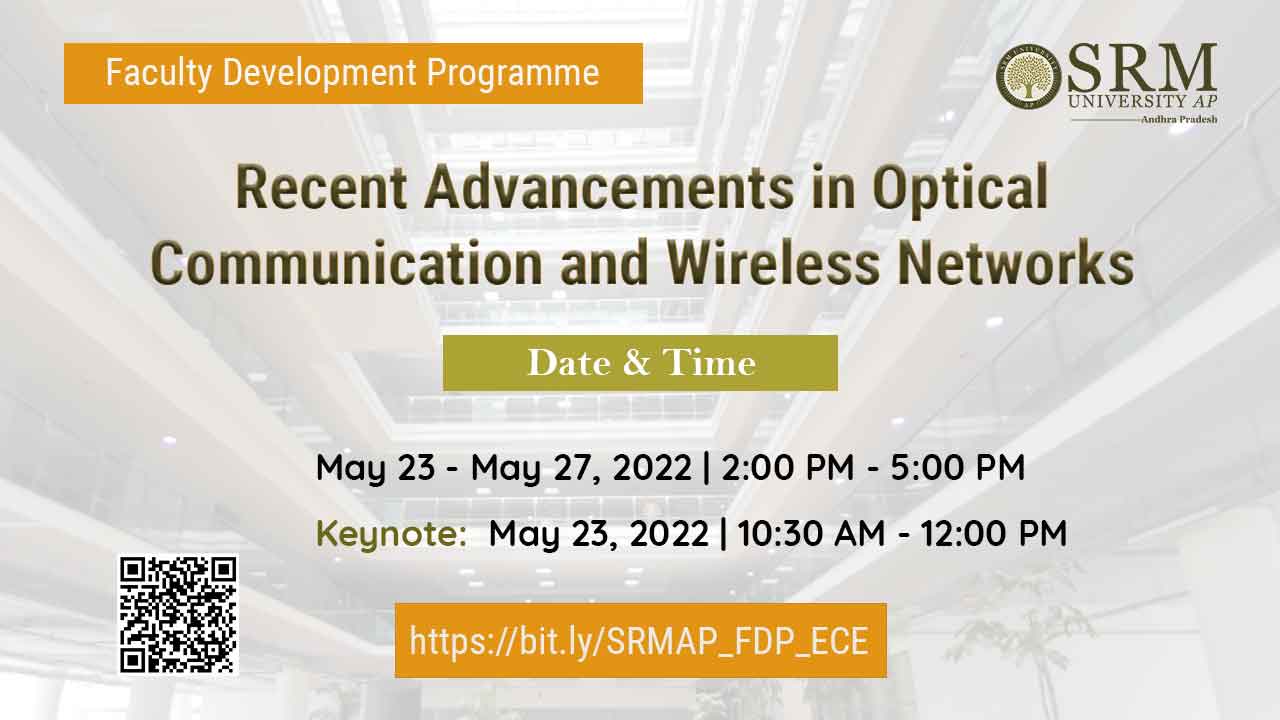 SRM University AP is delighted to announce the Faculty Development Programme on Recent advancements in optical communication and wireless networks. The session is scheduled from May 23 to 27, 2022. The programme will be managed by the faculties of the Department of Electronics and Communication Engineering. This five-day hybrid programme aims to enhance research capabilities mainly for the researchers and professionals working in Free Space Optics and Advanced Wireless Communication Networks. Eminent scientists and professors from highly reputed institutes are invited to share their research experiences.
SRM University AP is delighted to announce the Faculty Development Programme on Recent advancements in optical communication and wireless networks. The session is scheduled from May 23 to 27, 2022. The programme will be managed by the faculties of the Department of Electronics and Communication Engineering. This five-day hybrid programme aims to enhance research capabilities mainly for the researchers and professionals working in Free Space Optics and Advanced Wireless Communication Networks. Eminent scientists and professors from highly reputed institutes are invited to share their research experiences.
On the first day of the session, the keynote speaker, Professor M.S Alouini, KAUST, Saudi Arabia, will handle a session on Towards Connecting the Remaining 3 + Billion from 10.30 am to 12.00 pm. The FDP targets faculties from Abroad and Indian Institutes, Research scholars, Postgraduate and Undergraduate students. The sessions will be beneficial to those participants who are doing or planning to start a research career in optical/wireless communication network domains.
A wide variety of topics will be discussed during the five-day program. Visible light communication, Optical Imaging and Holography, Computational Optical Sensing and Imaging, VLC for IoT Networks, Terahertz Photonics for Wireless Communications, Deep learning for Wireless Networks, Intelligent Reflecting Surfaces, Edge Computing for IoT Networks, Beyond 6G Communications and Molecular Communications are some of the crucial ones among them.
There is no registration fee for the programme. However, the certificate will be provided to all the attendees based on the total attendance. The recordings of the sessions will also be provided to all attendees.
- Published in Departmental Events, ECE Events, Events
Gather around! Let’s undo the damage we caused!
“The greatest threat to our planet is the belief that someone else will save it” – Robert Swan
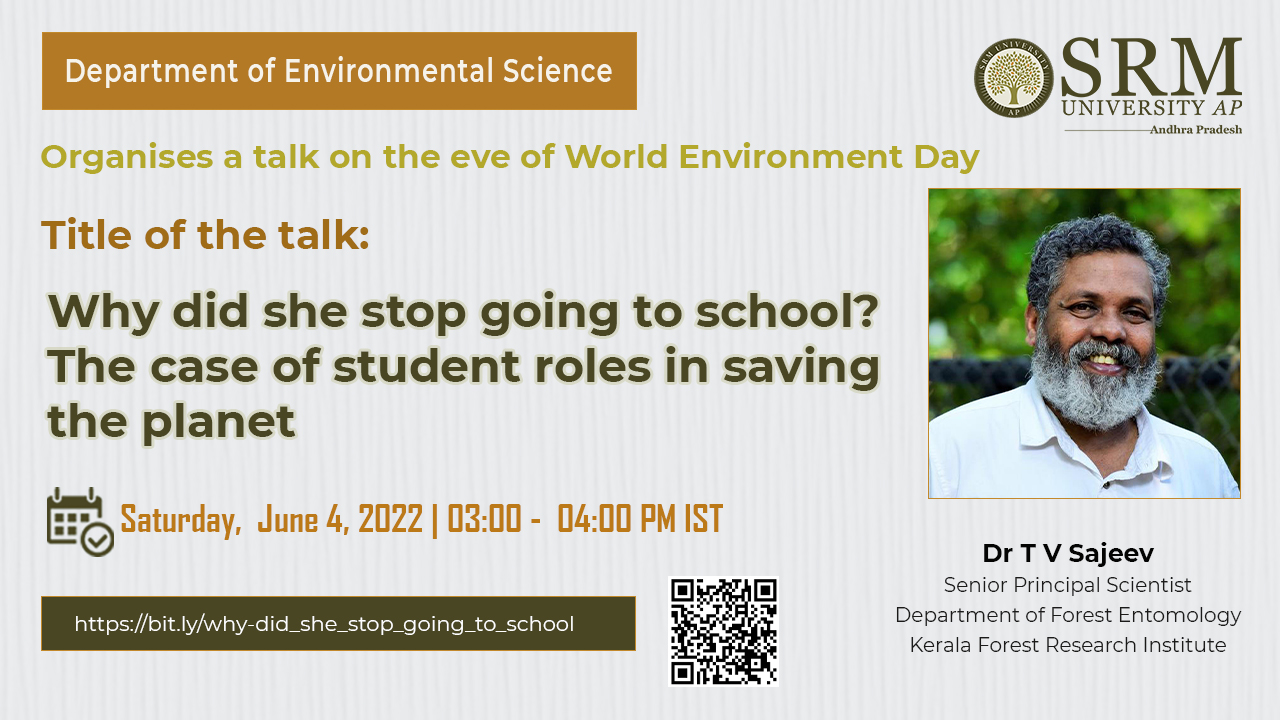 We live in a world where turning a blind eye to the air surrounding us is never an option. We are constantly reminded of our actions and their subsequent consequences on the planet. Yet many of us are in denial of the widening damages caused by us, and humanity is using the world’s resources faster than they can naturally recover. World Environment Day is here to kick you out of your comfort zone and push you to pause and reflect on what you have done so far.
We live in a world where turning a blind eye to the air surrounding us is never an option. We are constantly reminded of our actions and their subsequent consequences on the planet. Yet many of us are in denial of the widening damages caused by us, and humanity is using the world’s resources faster than they can naturally recover. World Environment Day is here to kick you out of your comfort zone and push you to pause and reflect on what you have done so far.
On the eve of World Environment Day, the Department of Environmental Science is organising a webinar to discuss topics that need immediate response actions. Dr T V Sajeev, Senior Principal Scientist, Department of Forest Entomology, Kerala Forest Research Institute, will be delivering a talk on ‘Why did she stop going to school? The case of student roles in saving the planet’.
Date: June 04, 2022
Time: 3.00 pm to 4.00 pm IST
About the speaker
Dr T V Sajeev has twenty years of service as a scientist in KFRI and twenty-eight years of research experience. He has a PhD in Environmental Sciences from CUSAT. His focused areas of research are landscape fragmentation, population dynamics of insects, political ecology, biological control, and management of alien species. Currently, he coordinates a Tree Health Helpline Desk in KFRI to benefit forest tree farmers in Kerala. He has also secured a patent for the development of a biopesticide.
World Environment Day 2022 urges you to celebrate planet Earth through collective transformative actions. Let’s undo the damages we caused! Come listen to what our #OnlyOneEarth has to say.
- Published in Departmental Events, ENVS Events, ENVS News, Events
DST-INSPIRE fellowship expert committee meeting to be held at SRM University-AP
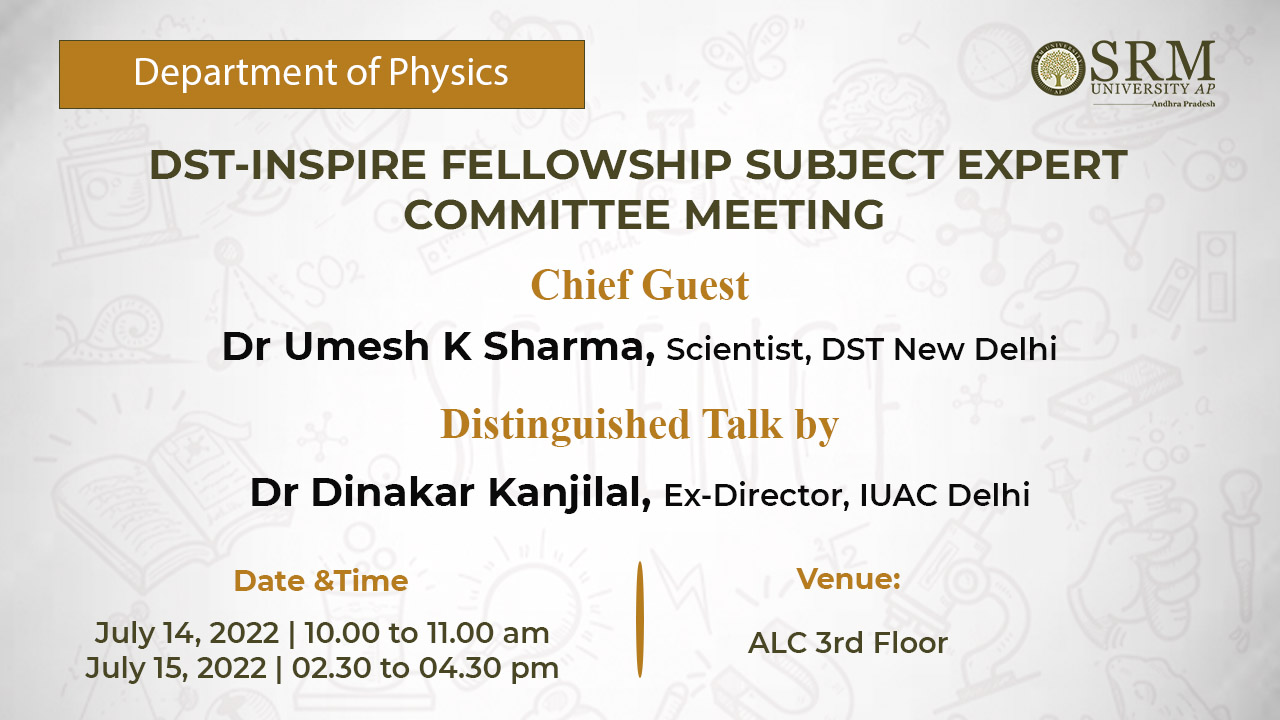
“Innovation in Science Pursuit for Inspired Research” (INSPIRE) programme is a flagship initiative of the Department of Science and Technology (DST) to persuade young and talented science enthusiasts to pursue various fields of sciences and instigate quality research to strengthen the Science and Technology network of the country.
INSPIRE fellowship is one of the important components under the purview of INSPIRE programme to attract Science graduates to undertake Doctoral research in both basic and applied sciences. The fellowship enables the aspirants to pursue research at any recognized university or institute in India.
SRM University-AP is glad to host the subject expert committee meeting on July 14 & 15, 2022, to select the meritorious candidates for the DST-INSPIRE fellowship 2022 to pursue PhD in physics at any recognized institute across the country. During the meeting, the expert committee will list out the most deserving candidates among scores of applicants from all over the country.
As part of the event, an interactive session has been scheduled with the eminent scientist Dr Umesh K Sharma, DST New Delhi. He would cast light on the scopes and opportunities of pursuing doctorate with an INSPIRE fellowship. A talk by Prof Dinakar Kanjilal, Ex-Director IUAC Delhi, will also be organized to give the faculty and students a comprehensive understanding of the same.
Distinguished Members of the DST INSPIRE Meeting
Dr Umesh K Sharma
Dr Dinakar Kanjilal
Dr G Vijaya Prakash
Dr Anandamayee Tej
Dr Rajendra
Dr Arijit Chowdhuri
- Published in Departmental Events, Events, Invited Talks, Physics
Explore the world through Physics
“Physics is about questioning, studying, probing nature. You probe, and, if you’re lucky, you get strange clues” – Lene Hau
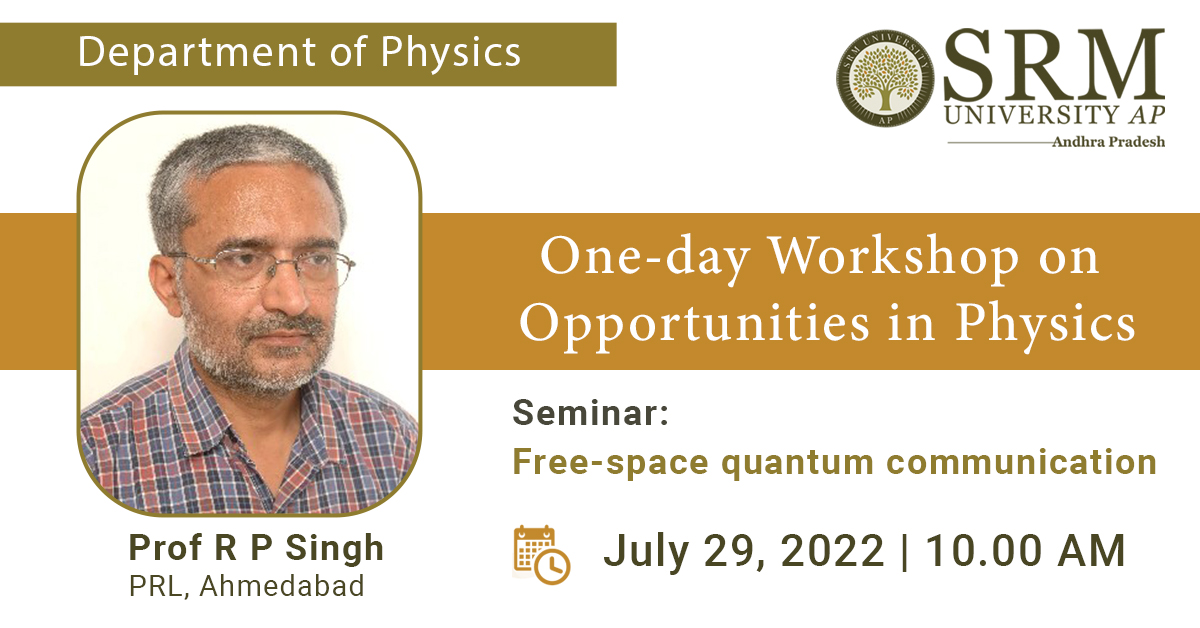
Are you a Physics student dreaming of the exciting possibilities and opportunities the subject may present you with? Well, your passion for physics is sure to gift you with endless opportunities to explore the world. No matter the type of career you choose, the magic of Physics will remain an integral part of your life. You could be an astronaut, a teacher, an engineer or a researcher, Physics will never fail you to take you to greater heights and depths of your interest.
The Department of Physics brings to you an exciting workshop on “Opportunities in Physics” with Prof R P Singh from Physical Research Laboratory, Ahmedabad on July 29, 2022 at 10.00 am. Students pursuing advanced undergraduate and postgraduate programmes in Physics in various universities and colleges in the vicinity are invited to attend the workshop, visit on-campus research facilities, and interact with the speaker and the faculty. The keynote speaker, Prof R P Singh will give a seminar on “Free-space quantum communication”, and various presentations will also be organised as part of the workshop.
This is an excellent opportunity for the students to create a deeper perspective on the scopes and opportunities of pursuing Physics. They can also get in touch with experts in the field and experience the latest innovations during laboratory visits. Having a broader understanding of the infinite possibilities of the subject will certainly help students make an informed decision as to how to move ahead and grab the right opportunity.
- Published in Departmental Events, Events, Physics, Workshop
From scratch to the published manuscript
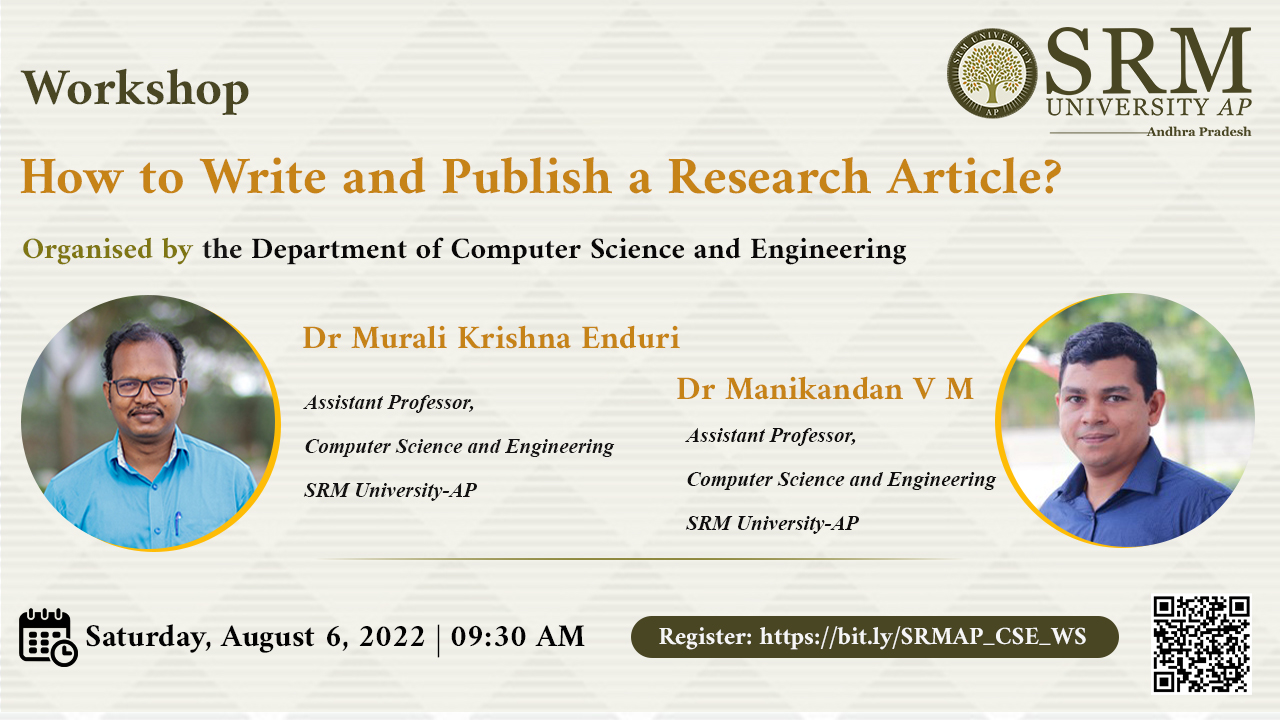 An ideal research process relies on some essential characteristics. One among them is to communicate the research findings. Peer reviewed research journals serve a huge role in this. However, researchers lack an understanding of how to write a publishable research paper. Grasping the basic structure of a scientific paper would help the researcher to decide what should be included in each section. There will be pitfalls in each of these sections but can be avoided if approached strategically. Along with the other components, target journal selection and authorship is also an important aspect of this entire activity.
An ideal research process relies on some essential characteristics. One among them is to communicate the research findings. Peer reviewed research journals serve a huge role in this. However, researchers lack an understanding of how to write a publishable research paper. Grasping the basic structure of a scientific paper would help the researcher to decide what should be included in each section. There will be pitfalls in each of these sections but can be avoided if approached strategically. Along with the other components, target journal selection and authorship is also an important aspect of this entire activity.
Successful production of an article for submission to a peer‐reviewed scientific journal requires substantial effort. To ensure this success, The Department of Computer Science and Engineering is planning for a one-day online workshop on How to write and publish a research article.
Date: August 06, 2022
Time: 09.30 am to 1.00 pm
The workshop expects more than four hundred participants. It is open to both students and faculty from UG, PG and PhD programmes. Assistant Professors Dr V Manikandan and Dr Murali Krishna Enduri are coordinating the event. The workshop will give a general idea about topics such as, different options to publish research works, benefits of publishing research articles, steps to write a review paper or research article from scratch, hands-on training with LaTeX to write a research article etc.
Join the workshop to learn the basics of a perfect research article!
- Published in CSE EVENTS, Departmental Events, Events, Workshop
Prediction of breakdown in disordered solids

The Department of Physics is glad to announce that Assistant Professor Dr Soumyajyoti Biswas and his PhD scholar Ms Diksha have published their article “Prediction of imminent failure using supervised learning in a fiber bundle model” in the Q1 journal, Physical Review E. Prediction of breakdown in disordered solids under external loading is a question of paramount importance to the stability of buildings and bridges to earthquakes. The researchers used numerical simulations of a model of disordered solids and recorded the time series of the avalanche sizes and energy bursts. They propose that a systematic analysis of these time series using supervised machine learning can predict the time of failure. Interestingly, the most important feature for such predictions turns out to be the measures of how unequal the avalanche sizes are.
Applying external stress on disordered materials beyond their mechanical limits results in their fracture. Hence it is important to know the limit or how the material behaves as it approaches the limit and the factors that influence it. The failure properties of materials are very distinct from other properties such as elasticity, in the sense that their predictions are not always straightforward. Predicting the failure in driven disordered systems is a long-standing problem in physics, engineering, and earth sciences. So, for understanding the fracture process and predicting the failure properties of the materials, a mathematical model (fibre bundle model) has been used.
They introduced the disorder to the system and generated the time series of avalanche size and energy bursts. Some inequality indices i.e., Hirsch index (h), Gini index (g) and recently introduced Kolkata index (k) were measured for the response statistics of the driven systems. These social inequalities are usually represented by the Lorenz function L(p), where p fraction of the population (events) possesses L(p) fraction of total wealth (avalanche mass) when the population (avalanche events) are arranged in the ascending order of their wealth (size). Based on these time series, the machine learning algorithm can predict the prior failure time of the system. So, they have used a supervised machine learning algorithm (with the above-mentioned indices as some of the features) to predict the failure time of the model. They observed that these inequality measures play an important role in making predictions.
Prediction of imminent fracture has its implications in a wide range of disciplines, including stability of mechanical structures (buildings, aircraft, bridges etc.), extraction of oil (fracking) to the largest scale of mechanical failure i.e., earthquakes. Here a supervised machine learning approach is used to make such predictions in numerical models. However, with the important features identified here for such predictions, such research can carry out similar predictions for experimental data. A follow-up of this work is being carried out by Ms Diksha with a group in Spain regarding the experimental verification. Their future research plans include applications of the methods developed here to be applied to real-life physical structures for their stability analysis and predictions of impending catastrophes.
Illustration 1: A schematic diagram of the Lorenz function L(p)is shown, where L(p) denotes the cumulative fraction of the avalanche mass contained in the smallest p fraction of avalanches. If all avalanches were equal in size, this would be a diagonal straight line, called the equality line. The area between the equality line and the Lorenz curve (shaded area),therefore, is a measure of the inequality in the avalanche sizes. Two quantitative measures of such inequality are extracted from here, the ratio of the shaded area and that under the equality line (Gini index, g) and the crossing point of the opposite diagonal – from (0,1) to (1,0), shown in dashed line,and the Lorenz curve, giving the Kolkata index, k. 1 − k fraction of avalanches contain k fraction of the cumulative avalanche mass.
- Published in Departmental Events, News, Physics, Research News


